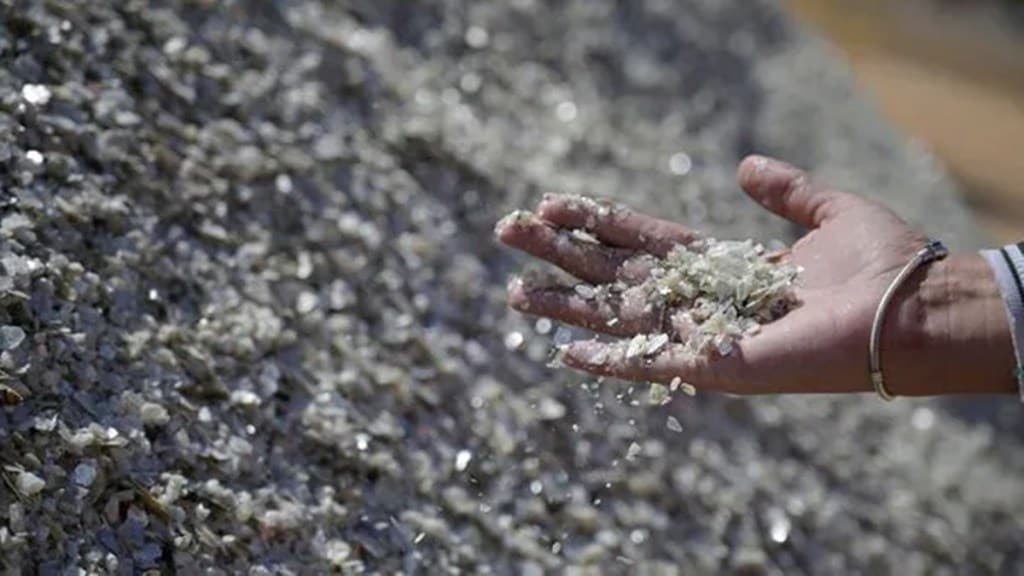By Deba Mohanty
India, within its national security framework, has taken a series of recent initiatives to improve military capabilities across domains — personnel, higher institutions, equipment profile, military-industrial/-scientific and resource rationalisation. Most of all, its indigenisation efforts merit consideration.
The success of indigenous platforms recently in Operation Sindoor is being talked about as a primer to India’s contemporary military capabilities. The operation, in many ways, has cast a spotlight on the importance of defence readiness, not just in terms of boots on the ground or missiles in the arsenal but also the foundational elements that make up our defence ecosystem. Now is the time for India to re-examine true atmanirbharta (self-sufficiency) in defence — the central element of military power. While we contemplate how to enhance military-industrial capacities, we should start with how best to integrate our critical mineral resources in the production of high-tech military systems. The availability, extraction, and use of such minerals, and getting them ready for high-end military production pose key challenges and offer opportunities. How we navigate this best will be key to our self-sufficiency efforts.
India has the world’s fifth-largest bauxite reserves, the ore used to produce aluminium. Nearly 60% of its bauxite reserves are concentrated in Odisha. These resources, harnessed strategically, can not only secure our mineral independence but also significantly bolster Make in India in general and defence manufacturing capabilities in particular.
Modern warfare is no longer defined solely by manpower and firepower. It is increasingly driven by technology, materials science, and self-reliance. Defence assets — be it fighter jets, precision missiles, submarines, drones, or satellites — are built on the foundation of advanced materials. Minerals form the essential baseline for high-tech precision products. Every piece of modern hardware, from communication satellites and armoured vehicles to naval warships and fighter aircraft, originates from mined elements. Minerals such as titanium, rare earth elements (REEs), copper, lithium, and most notably aluminium have evolved from being mere industrial inputs to critical strategic assets.
As it aspires to become a net security provider in the region and beyond, India must look at minerals not just from an economic lens but also through the prism of national security. The capacity to domestically source and process key strategic minerals will define the pace and credibility of our Atmanirbhar Bharat vision in defence.
Recognising this, the government has taken commendable steps to reform mining laws and auction mechanisms to ensure mineral security. Key among these are introducing commercial mining auctions under the Mines and Minerals (Development and Regulation) Amendment Act, which enables private sector participation in mineral extraction, and the critical mineral list issued by the ministry of mines that now includes essential defence inputs such as lithium, cobalt, REEs, and aluminium. These measures mark a strategic shift toward long-term resource planning. However, the current geopolitical climate demands sharper focus and execution. India must identify and protect its critical mineral corridors and prioritise exploration and commercialisation. The recent hostilities serve as a reminder that mineral security is inseparable from national security.
Aluminium is one of the most vital materials for India’s defence ambitions. Lightweight, corrosion-resistant, thermally efficient, and recyclable, aluminium is indispensable across aerospace, naval, and land-based applications. In an era defined by advanced defence technologies, this versatile metal has taken centre stage.
Aluminium is widely used in building airframes, missiles, radar systems, unmanned aerial vehicles (UAVs), launch systems, ship hulls, and artillery components. Its superior strength-to-weight ratio, durability, and excellent thermal conductivity make it especially suited for aerospace and marine environments. Fighter aircraft such as the Tejas light combat aircraft rely heavily on aluminium alloys for the fuselage and wings, enabling lighter and more agile airframes. Missiles and launch systems use aluminium to achieve greater range and payload efficiency through reduced weight. Naval vessels, particularly stealth ships, incorporate aluminium for its corrosion resistance and radar-absorbing capabilities. In space and satellite systems, aluminium provides vital thermal protection and structural integrity. Drones and UAVs also depend on its high strength-to-weight ratio to enhance manoeuvrability and operational endurance.
With the defence sector embracing next-generation systems like electric propulsion, directed-energy weapons, and space-based platforms, the demand for lightweight conductive materials and advanced thermal solutions places aluminium in even sharper focus.
Aluminium demand aerospace and defence sectors globally is expected to surge over 25% by 2030. For India, this is not merely a trend to follow, but a strategic opportunity to lead. Harnessing and expanding domestic capabilities in aluminium production and alloy innovation must now be treated as a national defence priority. The ministries of defence and mines and private players must collaborate to boost domestic capacity and innovation in aluminium-based defence technologies.
Recent border tensions must not be viewed as isolated events, but signals in a changing geopolitical theatre. National defence will be increasingly defined by material self-sufficiency and tech agility so that systems produced indigenously will lead to better results in any type of conflict situations. A detailed analysis of the indigenous systems used in Operation Sindoor will also help assess mineral requirements for enhancing military capacity.
To truly secure India on land, at sea, in the skies and in space, we must begin with what lies beneath. Minerals like aluminium are not just components of industry; they are shields of sovereignty. And in that mission, aluminium is a strategic shield.
The writer is Vice president, Society for the Study of Peace and Conflict.
Disclaimer: Views expressed are personal and do not reflect the official position or policy of FinancialExpress.com. Reproducing this content without permission is prohibited.
